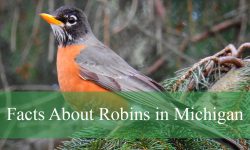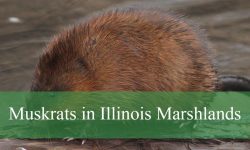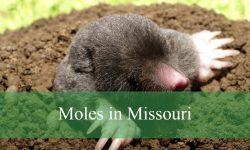Most types of venomous caterpillars have sharp spines, bristles, and barbs around their bodies. These features can cause nasty stings and skin irritations when handled without wearing protective gloves.
Identifying the types of poisonous caterpillars is vital since it will help avoid them at all costs. Our stinging caterpillar identification guide provides detailed descriptions and pictures of these venomous species.
Different Types of Venomous Caterpillars
Poisonous caterpillars come in different colors, shapes, and sizes. Some species may appear harmless but they are dangerous. Here is a list of different types of poisonous caterpillars in North America:
Hickory Tussock Caterpillar
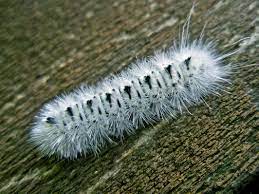
It is a black and white caterpillar covered in tufts of irritating hairs containing toxin compounds. The long white pencil hairs at the ends are the distinctive features.
Other identifying characteristics are bands of black dots wrapping the white body and black tufts of hair. The moth caterpillar can grow up to 45mm long.
These crawling insects feed in colonies and usually defoliate willow, pecan, hickory, and walnut trees. The urticating hairs cause skin irritation and nasty rashes.
Scientific Name |
Lophocampa caryae |
Host Plants |
Pecan, willow, walnuts, and hickory trees |
Identification Features |
White caterpillar with black dots on its back and body covered in black tufts of urticating hairs. |
American Dagger Moth Caterpillar
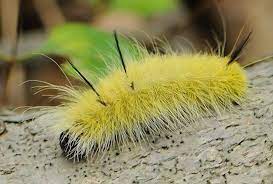
It is a poisonous hairy yellowish-white caterpillar covered in numerous long black pencil bristles. The slender caterpillar has stinging hairs that contain venom.
The irritating hairs can cause severe skin irritation, swellings, redness, and nasty rashes when handled without protective gloves.
These moth caterpillars defoliate elm, oak, maple, ash, and other hardwood trees. They are often seen from July to October.
Scientific Name |
Acronicta americana |
Host Plants |
Oak, maple, ash, and elm trees |
Identification Features |
Furry white-yellowish caterpillar with several long black pencil bristles |
Giant Silkworm Moth Caterpillar
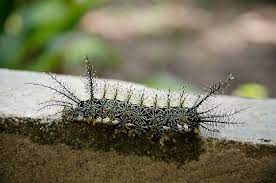
It is a venomous hairy brown caterpillar covered in several bristles. The white and tan markings on its back are its distinctive features.
The multi-branched greenish spines contain venom that can kill small birds and other potential predators. The spines cause skin irritation and localize pain among humans.
These caterpillars can grow up 55mm long and will keep changing their colors throughout the growth stages. Some are green and others are brown.
Scientific Name |
Lonomia obliqua |
Host Plants |
Alders, hickories, maples, and oaks |
Identification Features |
Soft pale green venomous spines cover the brown body. |
Pine Processionary Moth Caterpillar
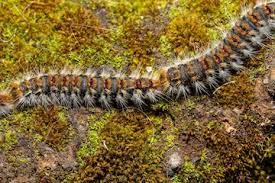
It is a black caterpillar with bands of yellow-whitish toxin-filled hairs. The round head and amber spots are the prominent distinctive features.
These stinging caterpillars move around in line to locate a new tree for defoliation. The irritating hairs can cause intense and continuous itching.
Scientific Name |
Thaumetopoea pityocampa |
Host Plants |
|
Identification Features |
Dark gray to a black caterpillar with white urticating hairs. |
Stinging Rose Caterpillar
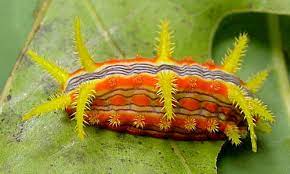
It is a brightly colored caterpillar with yellow or orange spine-covered venom-filled projections. The distinctive features are the black, orange, white and red lines running on its back.
These colorful and dangerous caterpillars can grow up to 25mm long. the seven pairs of spiny horns contain venom that causes nasty stings, rashes, and skin swellings.
Scientific Name |
Parasa indetermina |
Host Plants |
Apple, dogwood, hickory, maples, oaks, poplars, and rose bushes. |
Identification Features |
Oval shape with seven pairs of conical projections. |
White Flannel Moth Caterpillar
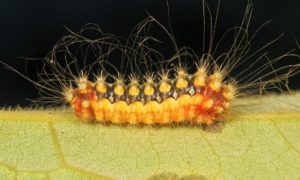
It is a vibrant yellow caterpillar with broad dark-brown or black bands on its abdomen and rusty-red ends. The tufts of stinging hair are the prominent features.
Other distinctive features are wispy black setae, whitish spots on the back, and short stinging hairs. These caterpillars are native to Texas, Florida, Washington, and Mexico.
Scientific Name |
Norape ovina |
Host Plants |
Black locust, elm, and hackberry |
Identification Features |
The dark brown or black band on its abdomen and bright yellow tufts of stinging hairs. |
Buck Moth Caterpillar
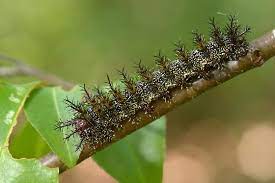
It is a giant dark-brown spiky caterpillar covered in tiny white dots. The brownish multi-branched projections are connected to venomous glands in its body.
A sting from a buck moth caterpillar can cause skin itching, redness, burning, and severe irritation. These caterpillars feed on the leaves of various types of oak trees.
Scientific Name |
Hemileuca maia |
Host Plants |
Oak trees |
Identification Features |
Black body with rows of multi-branched spines and white spots. |
Spiny Oak Slug
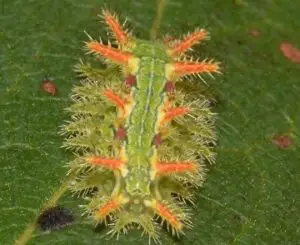
It is a poisonous caterpillar with fleshy spines covered in orange projections along the back and sides. The green body and two orange stripes at the back are distinctive traits.
The greenish-ringed patterns give the caterpillar a unique appearance. These crawling creatures can cause skin redness, inflammation, and a stinging sensation.
Scientific Name |
Euclea delphinii |
Host Plants |
Oak trees |
Identification Features |
Green caterpillar with fleshy spines covered in orange projections along the sides and back. |
White Cedar Moth Caterpillar
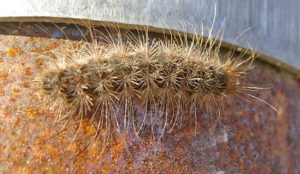
It is a cigar-shaped moth caterpillar with a dark brown body and orange prolegs. The light yellow line along its back is a distinctive feature.
The irritating bristles are connected to toxic glands and can cause skin allergies. Refrain from handling these crawling insects without protective gloves.
These crawling creatures move in colonies and are known to defoliate white cedar trees or Chinaberries. They can grow up to 40mm long.
Scientific Name |
Leptocneria reducta |
Host Plants |
White cedar trees or chinaberries. |
Identification Features |
Dark-brown cigar-shaped caterpillar with orange prolegs and a dim yellow line along the back. |
Hag Moth Caterpillar
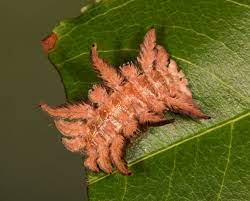
It is a unique moth caterpillar due to its curly projections covered in irritating hairs. The furry brown caterpillar resembles a brown spider at a quick glance.
Hag moth caterpillars are also called monkey slug moth larvae. They feed on the leaves of apples, birches, hickories, dogwood, and willows.
Scientific Name |
Phobetron pithecium |
Host Plants |
Alders, roses, dogwood, and hickories |
Identification Features |
Brown caterpillar with curly projections covered in urticating hairs. |
Io Moth Caterpillar
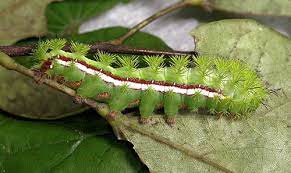
It is a brightly colored venomous green caterpillar due to several tufts of urticating hairs or spines. The large green caterpillar also has red and creamy-white stripes on the sides.
Juvenile caterpillars are orange or reddish-brown and later turn into large green at maturity. The spiny tufts contain venom that causes painful stings and itchy rashes.
Scientific Name |
Automeris io |
Host Plants |
Willow, hackberry, blackberry, and redbud plants. |
Identification Features |
Green body with a lateral red and white stripe along the abdomen. Spiky tufts of venomous hairs and reddish prolegs. |
Saddleback Caterpillar
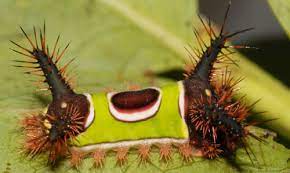
It is a lime-green caterpillar with an oval brown patch at the center and large fleshy horns at both ends. The tufts of urticating hairs and saddle marks are the distinctive features.
Creamy-yellow eyespots on the head create a menacing appearance to scare away potential predators. They feed on the foliage of apples, asters, dogwood, oak, maple, and elms.
The spines release toxins when they break into the skin and cause severe pain or nasty rashes. Other symptoms are redness, migraines, blistering, and burning sensation.
Scientific Name |
Acharia stimulea |
Host Plants |
Apple, asters, blueberries, citrus, dogwood, elms, and maples |
Identification Features |
Lime-green body with an oval brown patch at the center and fleshy spines sticking out. |
Black-Wave Flannel Moth Caterpillar
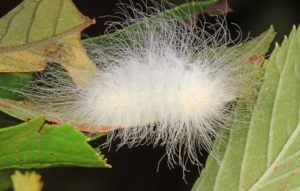
It is a stinging and poisonous caterpillar due to its long spindly creamy-white hairs. The furry hairs hide sharp spines connected to poisonous glands.
Refrain from coming into contact with these crawling creatures since a slight rub on the skin can lead to severe itching and nasty rashes.
The white flannel moth or crinkled flannel moth caterpillar is among the top poisonous species in Florida. They can grow up to 25-40mm long.
Scientific Name |
Megalopyge crispata |
Host Plants |
Alder, apple, birches, blackberry, oak, poplar, and willow trees |
Identification Features |
Creamy white hairs that become soft and furry. |
Southern Flannel Moth Caterpillar
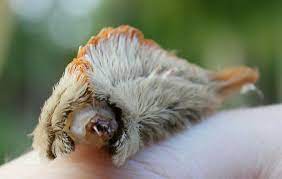
It is the most venomous moth caterpillar covered in long wavy brown hairs. The furry caterpillar varies in color due to different species and locations.
But most southern flannel moth caterpillars are either golden brown or dark gray and grayish white. The soft-looking hairs hide poisonous spines that cause nasty stings.
The crawling insect is also called the Italian asp, woolly slug, fire caterpillar, puss caterpillar, or Texas asp. It has an oval body tapered at the tail and grows up to 35mm long.
Scientific Name |
Megalopyge opercularis |
Host Plants |
Oak and elm trees |
Identification Features |
Luxuriant hairy coat with golden brown or grayish white colors. |
Monarch Caterpillar
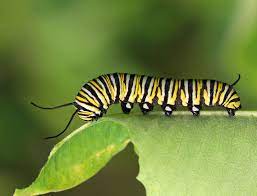
It is a butterfly caterpillar that loves feeding on the foliage of milkweed plants. They extract toxin substances from these plants and store them in their bodies.
The toxic compounds can kill small birds and other predators if ingested in large quantities. These crawling insects are often seen in areas with warm spring weather.
Scientific Name |
Danaus plexippus |
Host Plants |
Milkweed plants |
Identification Features |
White, black, and yellow bands wrap around the body with a pair of black antennae on its head. |
Bag-shelter Moth Caterpillar
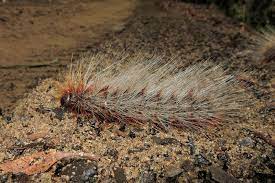
It is a black caterpillar with grey spiny hair and a brown head. The spiny hairs release venom into the skin when they break into it and cause severe skin irritation.
These poisonous black caterpillars feed in colonies and leave threads of silk when moving around the host plants.
Bag-shelter moth caterpillars are native to Australia in coastal, woodlands, and semi-arid areas. We do not recommend handling them without protective gloves.
Scientific Name |
Ochrogaster Lunifer |
Host Plants |
Wattle trees |
Identification Features |
Black body with grey hairs and a brown head |
Smeared Dagger Moth Caterpillar
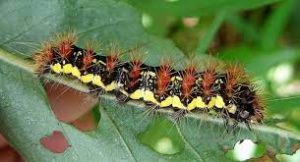
It is a dark caterpillar with black bumps that bear tufts of hairs wrapping each segment and can cause severe skin irritation when handled.
The yellow lines along the sides are distinctive features. These crawling insects are often seen in Florida, Texas, and Nova Scotia.
Scientific Name |
Acronicta oblinita |
Host Plants |
Apple, elm, cotton, pines, oaks, grasses, and smartweed plants. |
Identification Features |
Dark with black bumps that bear tufts of hair and yellow lateral line along the sides |
Laurelcherry Smoky Moth Caterpillar
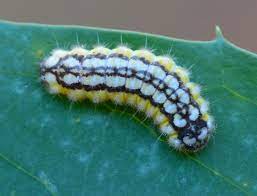
The crawling insect has white and black colors on the dorsal area. The yellow color on the lateral region is the distinctive feature for easy identification.
These caterpillars are often seen in Florida and some parts of Alabama in the month of July to August. The short yellow hairs cause skin irritation and painful stings.
Scientific Name |
Neoprocris floridana |
Host Plants |
Carolina laurelcherry |
Identification Features |
White and black bands run lengthwise on the back with yellow lateral lines. |
Variable Oakleaf Caterpillar
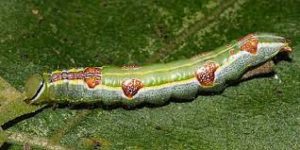
These caterpillars have different color markings on their long lanky bodies due to different species. They feed exclusively on the leaves of oak and beech trees.
The reddish stripe on the back is a distinctive feature for easy recognition. Red and green are the colors dominating oakleaf caterpillars.
These crawling insects have glands that produce formic acid that stings and cause skin allergy among humans. Refrain from handling them without protective gloves.
Scientific Name |
Lochmaeus manteo |
Host Plants |
Oak and beech trees |
Identification Features |
Bright green with yellow and white stripes along the sides. Greenhead has a diagonal red line on each side. |
Related Articles:


